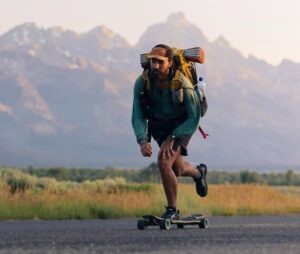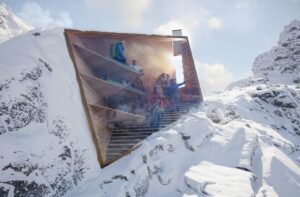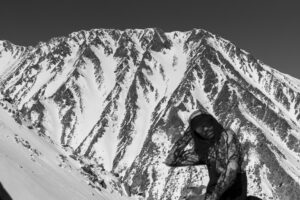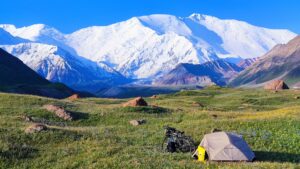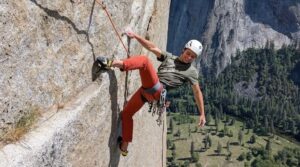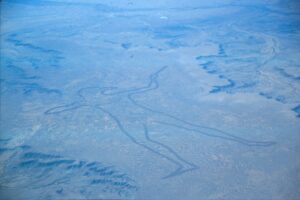Angola has a troubled history similar to so many other former African colonies. After its independence from Portugal in 1975, a brutal civil war waged for nearly 30 years. By the time it ended in 2002, half a million people had lost their lives, both to the ethnic fighting itself and to the thousands of land mines. Since then, Angola has become one of Africa’s largest oil producers. While the capital city of Luanda is quite modern, much of the country remains in poverty.
The Kwanza expedition was the brainchild of Alfy Weston, a British expat who at the time was stationed in Angola, working in the offshore oil and gas industry. In 2014, Weston had kayaked from Dondo to Luanda, which included 220km of the Kwanza River and a further 80km along the Atlantic coast. The trip retraced some of the footsteps of the colourful traveler, trader and exile Andrew Battel, who spent many years in that region in the 16th and 17th centuries.

The expedition route. Photo: Scafidi/Weston
In 2016, Weston teamed up with Oscar Scafidi to kayak the entire Kwanza from source to sea. Recently, ExWeb spoke to Oscar Scafidi:
ExWeb: Can you tell us more about yourself and your partner?
I am a 33-year-old travel writer, risk consultant and history teacher, of British and Italian heritage. My specialty is travel in difficult destinations, and I am particularly fascinated by Lusophone [Portuguese-speaking] Africa. I wrote the books on Equatorial Guinea and Angola for the Bradt Travel Guides, and am currently based in Antananarivo, Madagascar. Before that, I lived for five years in Luanda, Angola, where I met Alfy Weston through the local rugby club. Alfy and his brothers have pretty impressive adventure CVs that involve all sorts of kayaking and hiking adventures.
ExWeb: What motivated you to undertake this journey?
I had left Angola in 2014 and wanted an excuse to go back. Alfy was still working in Angola but had found out that he was soon going to be transferred to Hong Kong. He had a two-month gap before the move, and he came up with the idea for the expedition. He already had a two-man Klepper kayak in Angola and had done a shorter expedition on the lower stretches of the Kwanza River with his brothers. I guess he knew I would be the only person stupid enough to say yes to trying the whole river!
In 2012, I traveled all over the country to write the second edition of the Bradt Travel Guide to Angola. I saw for myself what a huge problem landmines cause the local communities. It was then that I decided to support charities working on landmine removal in Angola. One of them, the HALO Trust, had helped me with my research for the expedition, so I thought I should repay the favour by supporting their work. Our original aim was to raise US$10,000, which would pay for one de-mining team to work for one month down in Cuito Cuanavale, known as Africa’s most landmined town. In the end, we raised over US$25,000. That subsidized two months of work and the removal of 214 landmines.
ExWeb: What training did you do to prepare?
Before this expedition, I had never kayaked for more than about 30 minutes at a time. So I joined a kayaking club in London, told them what I was planning and did a lot of training on the River Thames in London. I also went to a whitewater rafting centre and took some safety courses. Looking back on my blog posts about training before the expedition, I am both shocked and amused by the naivety with which I approached the task. I like to think of myself as relatively athletic, and during my training, I was running, kayaking, lifting weights and practising wrestling and Brazilian Jiu-Jitsu. However, these isolated chunks of effort were nowhere nearly enough preparation for having to exert ourselves ten to twelve hours per day on a calorie-depleted diet. Since Alfy was actually in Angola at the time, he got in shape by paddling on the Kwanza River, in the Klepper we used on the expedition.

Out on the river. Photo: Scafidi/Weston
ExWeb: What were the main challenges you faced on the trip?
On the physical side, as I noted before, my body really wasn’t ready for what I was about to put it through. The start of the journey involved dragging our 110kg of equipment almost 60km along sand tracks from the source of the Kwanza to a point where it was wide enough to assemble the Klepper and start paddling. If this wasn’t hard enough, after the first 24 hours of paddling I was having back spasms due to the incorrect setup of my seat within the kayak. Alfy seemed to have a much better time of it than I did physically, although his feet got just as messed up as mine on the longer hiking sections.
We paddled past groups of hippos for about 25 days of the 33-day expedition. Hippos can swim very quickly when they want to. They got within a few metres of our kayak, forcing us to dash to the opposite bank and climb a tree to escape. We had to wait about half an hour up the tree before we could continue our journey. I have a video of us up the tree looking out at the hippos. The exposure to risk still makes me uncomfortable to think about. Way too many hippos and way too many rapids! I don’t think you could do that journey too many times and come away unscathed. But I cannot see how we could have researched those isolated upper stretches in any more detail without walking the whole thing before starting, which is impossible.
Despite my whitewater training, we still managed to crash and sink the kayak within the first ten days, losing a load of our gear. This was due to a miscalculation while trying to navigate through a fishing dam, which resulted in us sinking and snapping the kayak in half. We were very lucky nobody was injured, given the risks of drowning, broken limbs and even crocodiles. Luckily, I was filming with our GoPro at the time, as I thought our skilful passage through the fishing dam would be an impressive sequence! It made for one of the more memorable sections in the documentary film.
Local security forces also got over-enthusiastic and thought we were either spying on a “site of strategic interest” (Capanda Hydroelectric Dam), or diamond smuggling, or some combination of the two. Gun barrels were pointed into our tents while we were asleep, then we were handcuffed and carted off to jail in the middle of the night. They drove us all the way back to Luanda — 375km in the wrong direction — then tried to deport us. It took four days, the intervention of the British and Italian Embassies and Angola’s Minister of the Interior to make them see sense and release us.

A legacy of the Angolan civil war. Photo: Scafidi/Weston
ExWeb: You mention hippos, but what about crocodiles?
Angola’s rivers are home to a lot of very large Nile crocodiles, and yes, we came across some absolute monsters (4m+). Thanks to Angola’s lengthy civil war, there were no shortage of human bodies thrown into the rivers, and as in the neighbouring Democratic Republic of Congo, this has given some crocodiles a taste for human flesh. A cursory search of crocodile attack databases shows that tens of people are killed and eaten every year while using Angola’s waterways.
Despite this, local experts suggested to us that the risk of a crocodile attack was very low, especially if we followed a few common-sense rules: no swimming in the River Kwanza, no bathing on the river bank and no kayaking in the dark. It turned out that the crocodiles tended to view our 5.45m long kayak as too large to tackle, and they gave us a wide berth. We never had any incidents with them. That did not stop us worrying about meeting the same fate as South African kayaker Hendri Coetzee, who was pulled out of his kayak and eaten in December 2010 while on the Congo’s Lukuga River.
ExWeb: A Klepper can normally carry a month of food, but considering your calorie-depleted diet, it sounds like you wanted to travel light?
With all the other gear we brought, we could not have fitted a full month of supplies in the boat. We were overloaded as it was, and had to cut down on our kit just after the sinking (especially that ridiculous DJI drone). We also wrongly assumed that we could buy fish and carbs from local river communities, but some stretches were much more isolated than expected.
ExWeb: You said your boat “broke in half” after the incident in the rapids. Does that mean you had to source a new boat?
The Klepper skeleton (which is wooden) buckled and snapped, so the Klepper folded. However, the outer skin was not punctured. No, we did not get a new Klepper, we repaired the skeleton sections in Camacupa by finding a carpenter and a man who could do rivet work. There was no hope of getting new kit out to us in that location: either we dealt with the problem there and then or the expedition was over.
ExWeb: Besides malaria, did you have other tropical diseases to worry about?
Yes, there were all sorts of horrible diseases that you cannot protect against, especially dengue, but also sleeping sickness, Chikungunya and Leishmaniasis. I listed a few more in the online article I wrote about our trip: https://polosbastards.com/kayaking-the-kwanza-river/.
ExWeb: What did you learn from your time on the river?
We learned that the rural, isolated river communities in Angola are extremely welcoming and generous, despite being some of the most impoverished people in the country. Another important lesson was that it is amazing the feats of endurance your body will perform if you stay mentally strong. So much of expedition travel is mental. Alfy and I were working ten to twelve hours per day without enough food. Throwing in insect bites, extreme temperature variations, the stress of hippos and injuries to hands and feet, and we had the recipe for giving up quite early in the journey. It wasn’t any sort of athletic gift that pulled us both through.
ExWeb: How can we find out more about your journey?
We have released a 52-minute documentary film about our expedition which can be viewed free on YouTube. I also gave a 10-minute lecture on the journey at The Royal Geographical Society in London. We would love for people to support us by purchasing a copy of my book of the expedition, available from the crowdfunding publisher Unbound. We will donate 25% of the profits to The HALO Trust, so that they can continue their vital work in Angola, with an aim to making Angola landmine-free by 2025.
ExWeb: Any future trips planned?
Yes, in June 2019 I intend to kayak and hike the length of Madagascar’s longest river: the Mangoky. On this trip, it won’t be hippos that we are dodging, but armed bandits, so it will take a lot of planning to complete safely.

